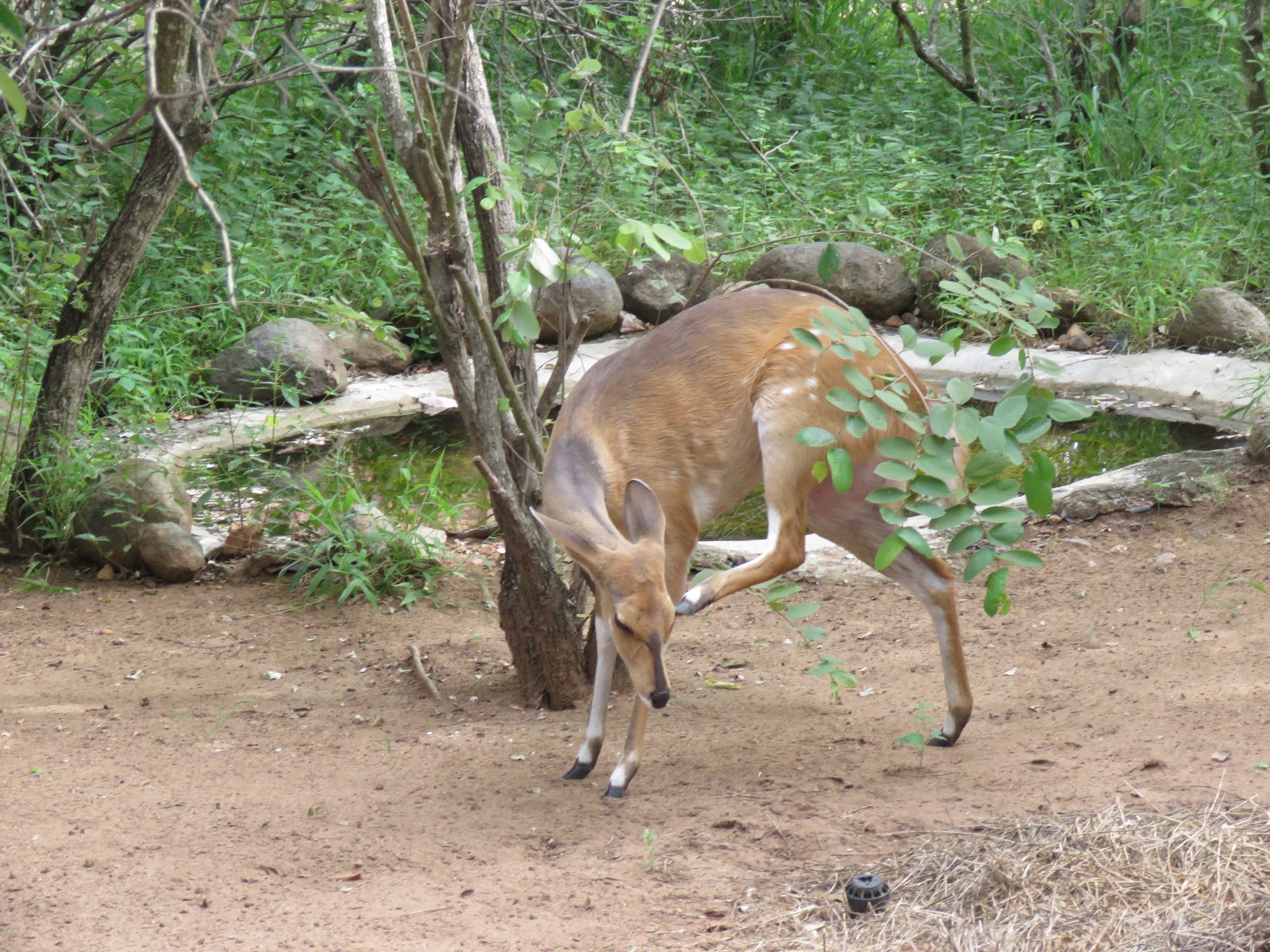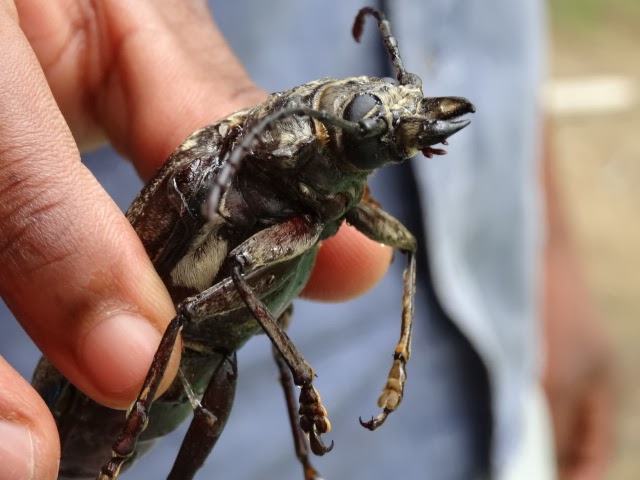 |
| It’s a sad time right now without enough rain to sustain the wildlife. |
“Sighting of the Day in the Bush”
 |
| This is one of our favorite pairs of warthogs, Mike and Joe, named after two US vice presidents, non-partisan of course, Mike Pence (current) and Joe Biden (last presidency). Tom always says, “The VPs are here.” |
We had a busy social calendar in our old lives, most often with us doing the bulk of the entertaining. Scattered among our events were several parties and get-togethers, some work-related, some family events, and some with long-time friends/neighbors.
It was a festive time we always enjoyed, although, at times, it proved to be exhausting when I made too much work for myself while Tom continued to work long hours, day after day.
 |
| Handsome male zebra. |
As a business owner for most of my career, I’d take time off work during the holiday season when possible to plan and orchestrate holiday events, including decorating, shopping, gift wrapping, baking, and always sending hundreds of Christmas cards, each handwritten inside the card.
Each year we made over one hundred bottles (wine bottle sized) of Tom’s Homemade Irish cream with hand-designed and printed labels and delivered these in person as gifts to special people on our list. It was a daunting task, but we both participated in the process and loved sharing the holiday treat with family, co-workers, and friends.
 |
| Sustenance is low in the bush right now. Zebras often graze on the dry bush. |
When we left Minnesota to begin our world journey, those days were over. There are no more Christmas cards to be sent, no more decorations, no more baking, no more handmade dog biscuits for our animal lover friends and family, and no more Tom’s Homemade Irish Cream. This part of our lives was over.
If you’re interested in Tom’s Homemade Irish Cream recipe and my
Polish Poppy Seed Bread (Strudel) recipe, please click here.
 |
| Only hunger will bring a shy impala to our garden. |
The only shopping we do now is for gifts for our six grandchildren. We agreed with our adult children that we’d no longer exchange gifts or cards. It was too difficult to do so from afar.
Thus, when we “left,” we also left behind all of the festivities, social gatherings, camaraderie, and events we so much. This will be our seventh Christmas since we left Minnesota. Of course, we’ve missed the activities with family and friends, but oddly we don’t miss all the commotion and work.
 |
| Impalas are very resourceful in finding food. Plus, they are one species we see out and about on the hottest of days, whereby others find shelter from the sun and the heat. |
Overall, we’ve spent the bulk of the past Christmases on our own except for the first in 2012, when we rented a holiday home in Henderson, Nevada, and spent Christmas with some of Tom’s siblings and spouses, my son Richard, my sister Julie, cousin Phyllis and daughters Robin and Wendy and a few friends.
And then, in 2014, three of our adult children, spouses, and six grandchildren joined us on the Big Island in Hawaii for the Christmas season. During that time, all of us saw lava for the first time, flowing from Mt. Kilauea, and the festivities were many.
 |
| The symmetry of the bodies of impalas is a beautiful sight to behold. |
The remaining Christmas eves (we spent 2013 Christmas Eve with friends Kathy and Don at their lovely bush home here in Marloth Park) and Christmas days, we were on our own, although we spent all of those in restaurants and hotels. In each case, we had a good time.
Last Christmas, we were in Buenos Aires, Argentina, awaiting the Antarctica cruise departing on January 23rd. Everything was closed, so we ended up eating cold cuts we found at a local minimart. We were the only guests in the hotel. Here’s the link and a photo of our Christmas Day meal. We had to laugh!
 |
| Our Christmas Eve dinner last year in a boutique hotel in Buenos Aires, which we repeated on Christmas Day. We were the only guests in the hotel. |
This year, everything is different. Here are our plans over the upcoming holiday season:
Thursday, December 20, 2018: Dinner-buffet at Ngwenya Lodge and Restuarant (we have a standing reservation)
Friday, December 21, 2018: Dinner at Jabula Lodge and Restaurant (we moved our standing Saturday reservation to Friday)
Saturday, December 22, 2018: Holiday sundowners and starters at Kathy and Don’s river-view bush home
Sunday, December 23, 2018: Tom’s birthday dinner at Rita and Gerhard’s temporary home at Ngwenya is a fully equipped luxury on-site holiday home
Monday, December 24, 2018: Christmas Eve at our house with Rita and Gerhard joining us
Tuesday, December 25, 2018: Christmas Day dinner at Kathy and Don’s
Thursday, December 27, 2018: Back to Ngwenya with Rita and Gerhard for the Thursday night buffet dinner
Saturday, December 29, 2018: Jabula Lodge and Restaurant for our standing Saturday night reservation with Rita and Gerhard
Monday, December 31, 2018: New Year’s Eve party at a popular local resort, details to follow.
 |
| Usually, males stop by together while females also visit separately. |
As for New Year’s day, we’ve yet to make a plan, but surely something will be on the agenda. Whew! This busy schedule makes us smile and, of course, feel grateful for our beautiful friends who have included us in their inner circle.
Whatever you do (for those who celebrate), we hope you’ll have a festive and meaningful holiday season.
Photo from one year ago today, December 19, 2017:
 |
| Shipwreck in Puerto Madryn in Patagonia, Argentina, a town we toured as a port of call on the South America cruise. For more photos, please click here. |






































































































